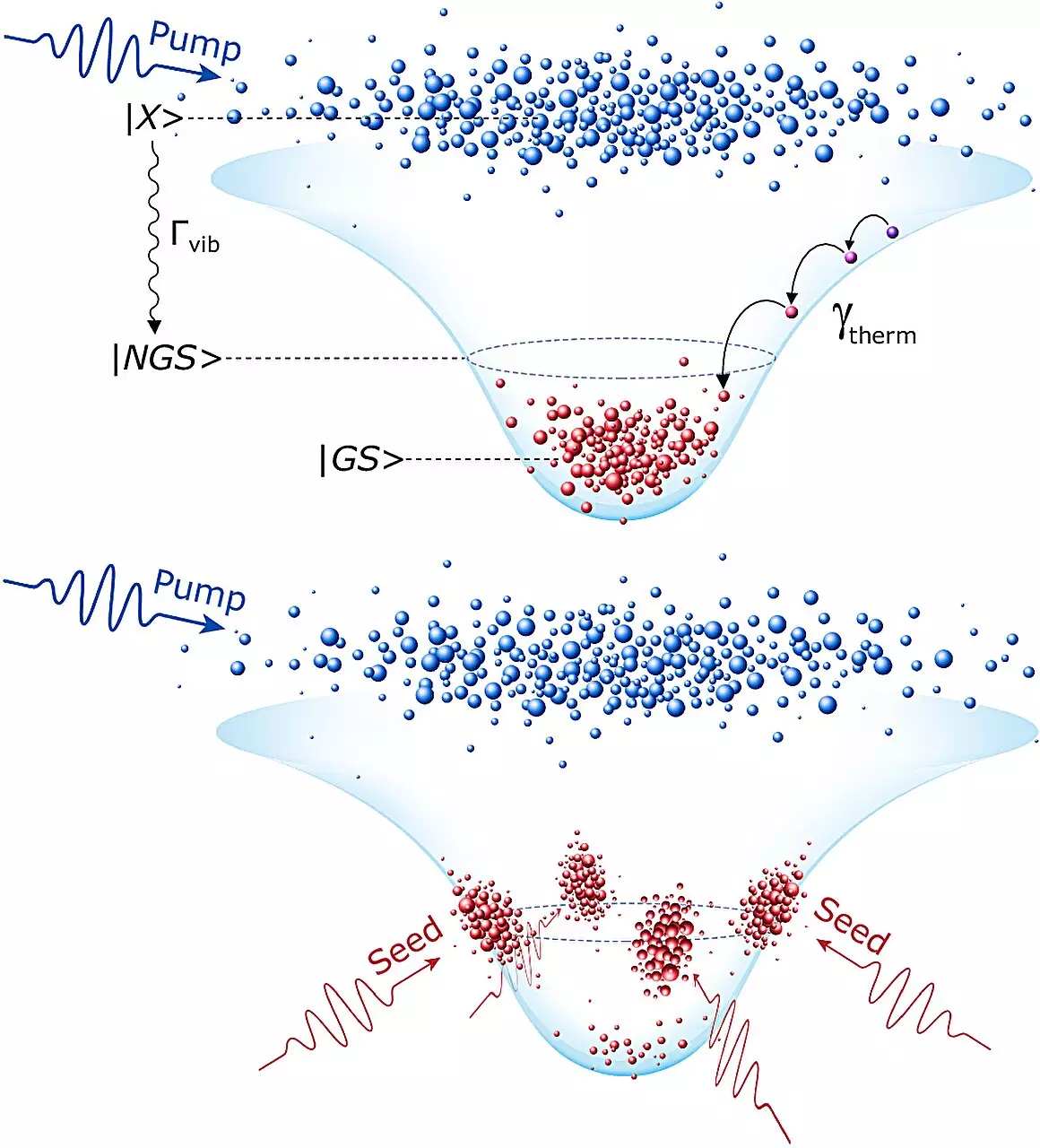In a groundbreaking leap that could redefine computing as we know it, researchers at Skoltech, alongside their counterparts from Bergische Universität Wuppertal, Germany, have unveiled a universal NOR logical element that operates solely on polariton condensates. This innovation not only surmounts the limitations of traditional electronic systems but also opens the gateway to optical computing—an ambitious realm that has tantalized scientists for decades. The research, published in *Nature Communications*, puts a spotlight on an era where computing speed and efficiency may reach unprecedented levels.
Electric circuits, as we understand them, suffer from finite operational speeds, often capped at several gigahertz. As observed by Denis Sannikov, head of the project, this limitation manifests when the processor is pushed beyond its thermal threshold, turning it into more of a heater than a functional computing unit. The pursuit of greater speed has historically involved stacking clock frequencies, but the imminent barriers of electronic limitations often loom large. Enter polariton condensates—these fascinating states of matter represent a promising alternative, allowing processing speeds that could soar to an astonishing terahertz without the burden of heat generation.
The Logic of Light: A Paradigm Shift
Why does this shift to optical logic matter? The stark superiority of polariton transistors lies in their enhanced operational frequency potential. With the ability to process information at speeds surpassing 300 times that of conventional electronic transistors, optical components not only pledge an acceleration in computing capabilities but also promise to change paradigms in how we conceptualize data processing. The new optical NOR gate demonstrates this ability by supporting an impressive range of twelve inputs, showcasing not only speed but also unparalleled versatility in managing logical operations.
The innovative use of polaritons—a hybrid of light and matter—fuels the excitement around this research. Compared to conventional photons, which are often impeded when interacting with one another, polariton particles can amplify weak optical signals significantly. This amplification is a game-changer, akin to capturing and directing light with the precision and intensity reminiscent of manipulating water droplets condensing from vapor on a frosty window.
Creating Cascaded Optical Logic: The Future is Bright
A pivotal advantage of the proposed optical NOR gate is its intrinsic ability to be cascaded and reproduced. By enabling these logic gates to connect and form circuits without relying on electric current, the foundation is laid for crafting entirely optical computing systems that could outperform today’s electronic alternatives. Each logic gate calculated operations similar to those conducted by their electronic counterparts—holding true to the essential identity of computing as rooted in logic operations.
Sannikov’s insights crystallize the significance of their achievements. By demonstrating the practical implementation of cascaded optical universal logic gates for the first time, the groundwork for a fully realized optical computer comes into clearer focus. This innovation goes beyond a mere technical accomplishment; it can unlock new potential in AI, machine learning, and other computationally intensive domains.
A Leap Towards Optical Computing Dreams
Furthermore, the researchers have ventured deep into the mysterious realm of non-ground states of polaritons, an exploration that enhances the capacity for optical logic to switch from active to inactive states seamlessly. This groundbreaking approach has previously evaded scientists, whose efforts to harness the unique properties of light in computational contexts have always faced significant obstacles.
By eliminating the physical interference challenges traditionally associated with optical systems, this research signifies more than mere experimentation; it heralds a potential revolution in the computing landscape. The implications of such developments extend far beyond mere speed; they necessitate a radical reconsideration of how computational systems interact with data, power, and efficiency.
The work from Skoltech exemplifies the quest for a next-generation computational approach that blends light, speed, and intelligent design in a way that current electronic technologies simply cannot match. It invites us to explore the vast, uncharted territories of optical computing where speed, efficiency, and unprecedented capabilities await—signaling a transformative leap that could reshape our digital future.


Leave a Reply